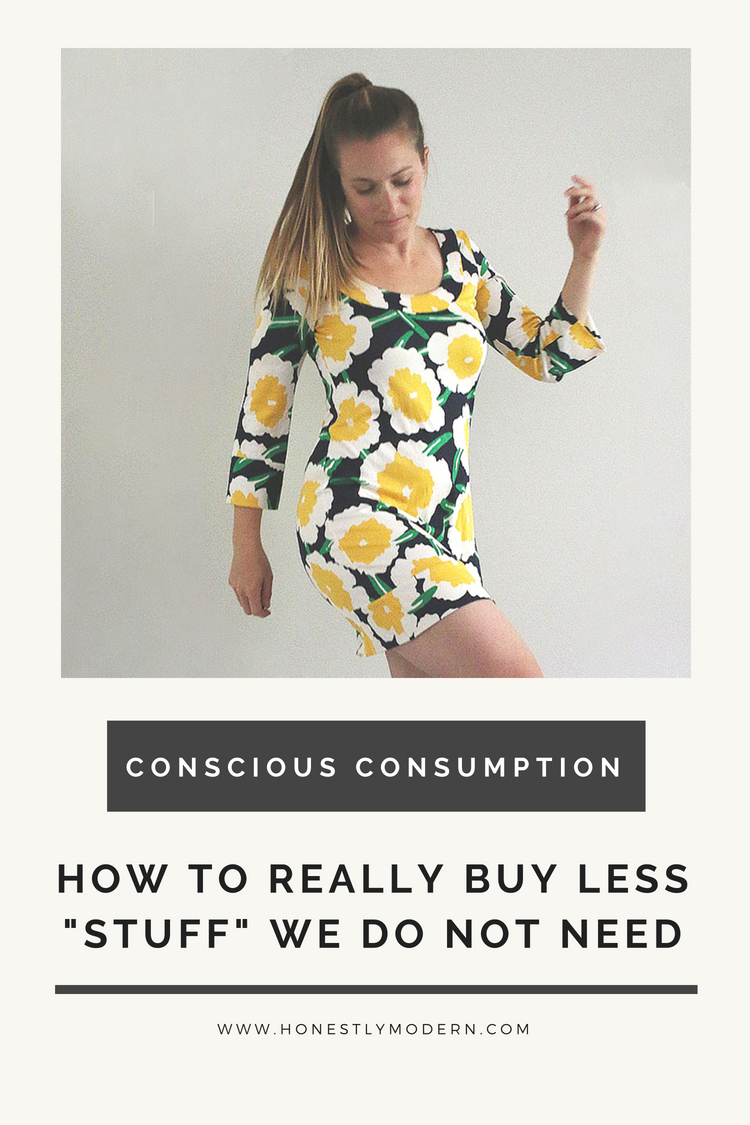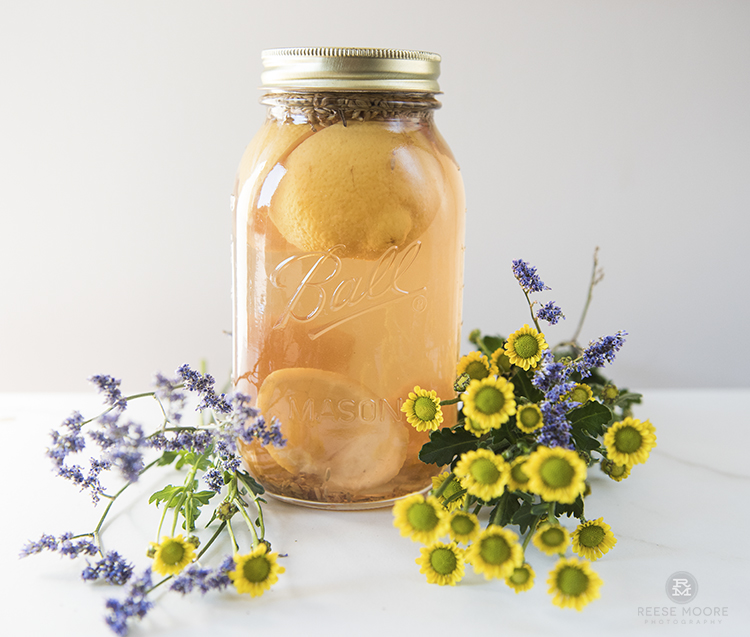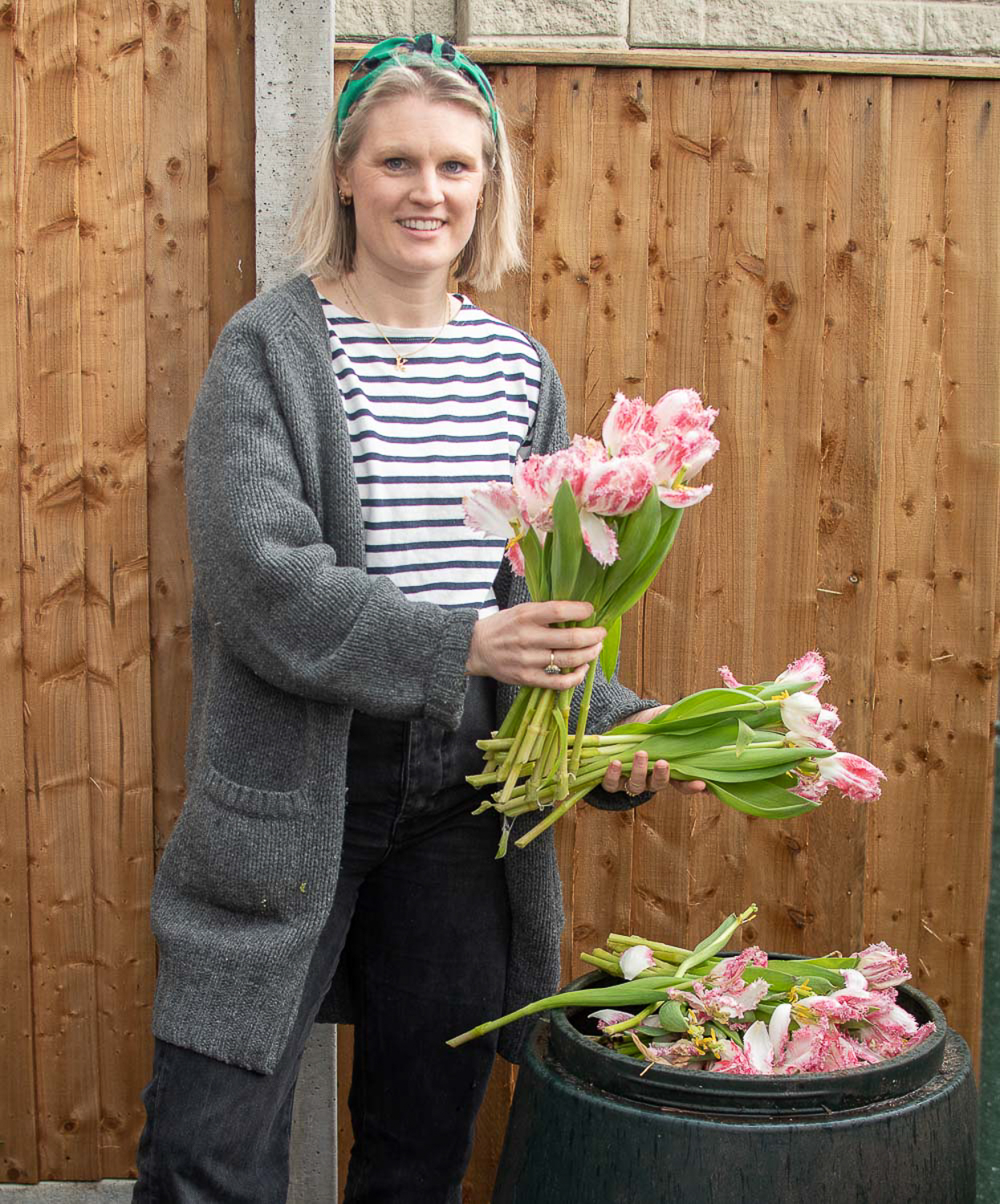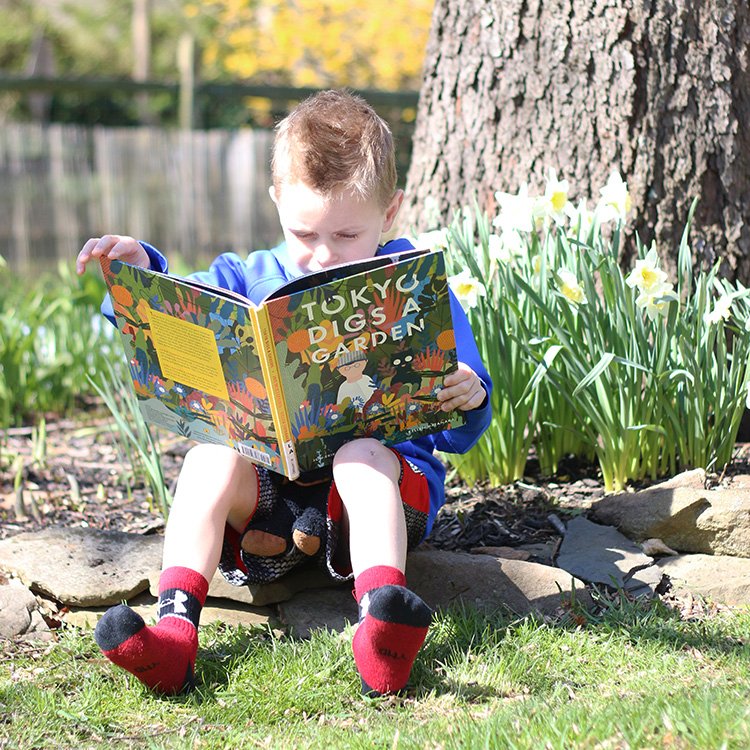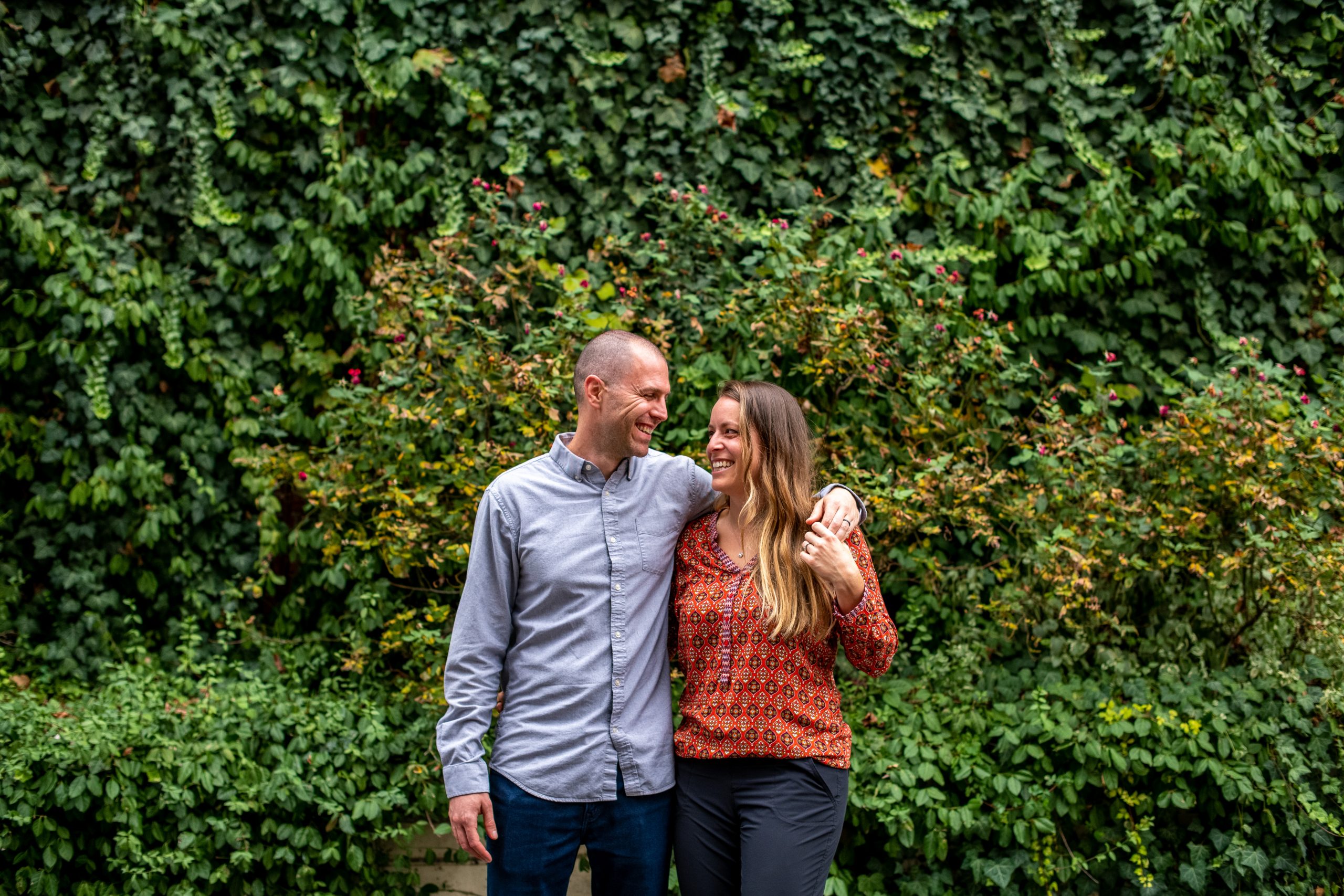How To REALLY Buy Less “Stuff” We Do Not Need
There’s a lot of talk about minimalism, tiny houses, buying less, de-cluttering and the like. These ideas and lifestyles are growing in popularity, but they are a far cry from the “more is always better” mentality to which most of us are accustomed. Many of us could benefit from buying fewer things. We have excess “stuff” building up in and around our homes that takes up space and generates stress. Old habits die hard. How do we start practicing these sustainable living principles in a world obsessed with always wanting more of everything?
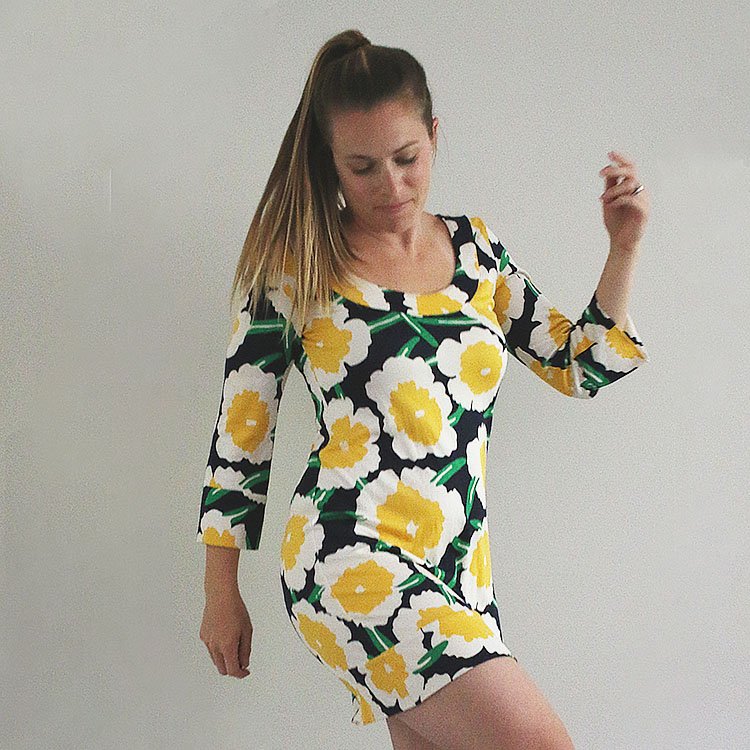
Behind closed doors, I love to belt out a good tune and dance my heart out. I can’t sing well nor do I have any natural rhythm, so I won’t be putting my skills on display anytime soon. But you better believe, after two decades, I can still sing every word of this little number. Can you name that tune?
“Looking around here you think
Sure, she’s got everything
I’ve got gadgets and gizmos a-plenty
I’ve got whozits and whatzits galore
You want thingamabobs?
I’ve got twenty!
But who cares?
No big deal
I want more”
Even though I haven’t watched The Little Mermaid in about twenty years, I bet I could still sing this song in my sleep.
Last week, Stephanie from The Sustainable Minimalist podcast, shared an interesting graphic on Instagram about The Little Mermaid that got me thinking. Stephanie was referring to the lessons we could learn from the movie about plastic pollution in the ocean. Even in 1989, when the Little Mermaid was released, Ariel had an enormous collection of human gadgets and gizmos that had been dumped into her ocean home. Apparently the writers at Disney had an inkling about the pollution problems looming in our oceans, but I can assure you that none of that resonated with 6 year old me.
In her song, Part of Your World, Ariel continues to sing about how she has an enormous collection of things, but “No Big Deal. I Want More.” In the context of the movie, she’s clearly expressing that the “stuff” is not bringing her happiness, and she’s in search of something deeper and more meaningful… a relationship with a person.
As a disclaimer, I’m not advocating we all ditch all of our personal belongings and give up our lives to go chase a potential partner with whom we’ve never spoken. But she’s making a good point that even endless collections of stuff don’t ultimately make us happy. In fact, they probably encourage us to long for more.
When More Isn’t Better
Within reason, less “stuff” equates to less stress. There are caveats. A family living in poverty with an empty fridge and few clothes would not alleviate stress by having less food in their cabinets or fewer clothes in their closets (obviously). For those of us lucky enough, however, to have the privilege of abundance, too much stuff often creates a whole lot of undue stress.
Things are nice to have when they provide a source of joy or happiness. Great kitchen gadgets, for example, might foster a love of cooking and putting healthy meals on our table to share with family. But those gadgets only create stress if they collect dust and clutter up our cabinets, making it harder to use the handful of things we actually love. We waste money buying them. We need ever-bigger kitchens to store them. And they create constant frustration as we try to maneuver around them, taking them out and putting them away to get to what we really want to use.
Much the same can be said for a closet full of clothes we unsatisfyingly sift through each morning. We feel disappointed about all the things we see, frustrated that we spent so much money on things that never get worn and don’t make us feel great when we wear them. We believe that buying more will help resolve the “nothing to wear” dilemma. In reality, though, we probably have enough things we love. They are just buried under all the pieces we wanted to love and never actually loved.
Sorting through our existing collections of “things” in every room of our house is the first step in finding a more sustainable cadence of consumption. Once we do that, however, it’s important to ensure we are more diligent about what we buy and bring into our homes, or we end up with an endless cycle of purchasing and disposing that is incredibly wasteful and frustrating.
How do we buck the trend? How do we change our habits to start buying less and feeling good about it? If you’re interested in slowing down your purchasing and maintaining a more sustainable balance of consumption, consider these ideas to help curb your consumption and be more intentional about what you buy and how you spend your hard-earned dollars.
9 Ways To Buy Less “Stuff” We Do Not Need
Stop Shopping for Sport
Shopping should be something we do with intention. We have a particular purchase in mind and head to the store with a list or a plan. The plan could be very specific, such as the intent to buy a particular item you’ve already researched online and need to see in the store to confirm your commitment. Maybe you aren’t sure exactly what you want but you know the gap you are filling: a type of clothing item, a piece of furniture, or equipment for an activity, for example.
You don’t need to know exactly what you want (although it helps), but you should have a general intention in mind. Stop shopping as a pastime or social activity. There are plenty of better alternatives that won’t result in impulse or wasteful purchases.
Don’t Shop in Malls
Malls and stores spend a lot of time and energy creating displays, layouts, promotions and incentives to entice customers to spend more money. They also house primarily brands that are not particularly sustainable or ethical with respect to their production policies and supply chains. Just by showing up at the mall, we often feel a need to buy something so our trip to the mall wasn’t “a waste”. After all, what is the point of going to the mall if we come home empty-handed?
Instead of being tempted by all the well-planned gimmicks and incentives at the mall, just don’t visit. If you need something, research online, ask friends for recommendations, and buy from the handful of brands you’ve come to trust and love.
Wait Before You Buy
Wait 24 hours before buying just about everything. So many ideas and intentions look really different the next day, and the waiting period helps give a new perspective. Often times, once the initial interest has worn off, the purchase is no longer that interesting.
Put it on a Wish List or Pinterest Board
Sometimes creating a wish list of things we want or a mood board can be just a satisfying as actually buying it. Add things you want to an Amazon Wish List or a Pinterest board. Not only will you get to create something fun and pretty but you also will have the link to buy it should you decide a day or week or month later that you still really want something. It might help create peace of mind about not buying something right away when it’s easy to come back to later to purchase it.
Establish Some Guardrails
Contrary to initial thought, guardrails or limitations can be really helpful with respect to making good decisions. Too many choices are overwhelming, which can create stress on its own. Define certain principles that will dictate how and when you shop. Maybe you only shop secondhand or only items made in the USA or ethical brands.
Back in 2013, I did a year-long 90/10 secondhand shopping challenge. For one year, I purchased at least 90% of my clothes secondhand. I really learned a lot about how to shop secondhand and how easy it is to find what I need. I’ve never looked back and nearly all of my clothes today are secondhand.
Maybe you set a one in, one out, policy where you can only buy something if you have a similar item that can be donated or upcycled. With a one in, one out policy, the new item must be better than whatever you are replacing, and it helps prevent clutter from building up in your home.
Know How You Will Use It
Be honest with yourself about how it fits into your actual life and not just your aspirational life. For example, don’t buy jeans a size too small hoping you’ll fit into them one day. Buy the size that actually fits and wear them regularly. As another example, don’t buy expensive exercise equipment until you’ve established a routine to know you’ll use it. Start by doing workouts that use your own body weight, running, or maybe make a small investment in something like a set of resistance bands or a jump rope. Leave investments in skinny jeans and weight benches for the day when the jeans already fit and fitness is part of your regular routine.
Consider If Something You Already Have Will Do
It’s easy to buy one thing that will do a very particular job well, but sometimes we already own something that does the job just fine. Before chasing the shiny object or buying something new because it looks perfect, consider if you can make do with something you already have. The new alternative might create a lot of convenience or really enhance quality, in which case it could be a great purchase, but it’s worth thinking about how we can use the things we already have to get the job done.
Consider the Cost in Terms of Hours Worked
Calculate a rough estimate for your hourly wage based on your income and the number of hours your work. If you’re feeling ambitious, don’t forget to take out taxes before doing the calculation. Depending on your income level, this can make a big difference.
Using your hourly rate, determine the number of hours you would have to work to pay for the item you want to buy. If your hourly wage is $13 per hour and you’re looking at a new bag that costs $100, is it really worth 8 hours of working to buy? I’m not suggesting the answer should be the same for everyone, but it offers another perspective from which to consider the purchase that might feel more tangible for some.
Take An Intentional Break From Shopping
Set a specific period of time during which you will not shop at all, but for things like groceries and everyday consumables. It may only be a couple of weeks, but going through such an exercise often teaches us what we can do with the things we already have or teaches us to get creative with the resources available to us.
Dacy, from Mindful Closet, who was featured here on Honestly Modern not long ago, created a Purchase Pause email series to guide a reader through a period of not making any purchases aside from consumable items like groceries and gas. She has a lot to offer with respect to reducing consumption and being more mindful about our purchases. I highly recommend checking out the email series if you’re ready to slim down your purchasing habits a bit.
Lots of Tips and Tricks But It Takes Work
There are many tips and tricks we can implement in our lives to limit the impulses we have to buy things and ultimately buy less of the things that don’t really bring us happiness and joy. Living in a world of “more is better”, it can feel tough to go against the grain and scale back, decline new or free things, and incorporate into our lives a new and more intentional attitude about how we make purchasing decisions.
With some thought and patience, however, we can all be more intentional about what we buy and consume. Do you have any other ideas? I’d love to hear them in the comments.
